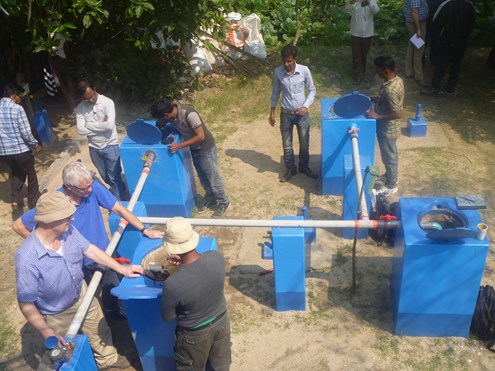There is so much water in Bangladesh that it is almost unimaginable that for large periods there is a shortage of freshwater. Drinking water shortages are becoming more and more common. Precipitation during the wet season should be sufficient to supply drinking water to rural households. However, during the dry season the fresh-salt water interface moves upward the rivers. Consequently, large amounts of surface water become saline and, therefore, unsuitable for drinking purposes. The rising sea level, prolongation of the dry season and shallow groundwater fresh-salt interface intensify the freshwater shortages.
Acacia Water and Dhaka University were asked to develop practical solutions to counteract the freshwater shortage problem.
A practical solution that can be implemented at large scale on the short term is Managed Aquifer Recharge (MAR). By means of a MAR-system freshwater coming from rainwater ponds and rooftop harvesting can be infiltrated. Water is infiltrated below an impermeable clayey layer into the salt water layer. The result is a freshwater bubble. When droughts threaten livelihoods the infiltrated freshwater can be extracted through shallow wells. As a result of the filtration process in the soil, the extracted water is cleaner and safer than from many other sources. In addition, the freshwater bubble is relatively well protected against the effects of cyclones and floods that regularly threaten the region.
Since 2009 a total of 20 MAR-pilot studies were performed in the Bangladeshi Delta. The studies focus, amongst other, on the required technical, physical and hydrogeological boundary conditions. During the pilot-phase the MAR-technique proved successful and with great potential for upscaling. The upscaling started in 2013 with the implementation of 73 MAR-systems in the Districts of Khulna, Bagerhat and Shatkira. In 2015, a final series of systems will be installed and made ready to use.
The knowledge on MAR-systems gathered in Bangladesh can also be of great value elsewhere. The theories beyond, the system’s analyses performed and the results of the pilots provide valuable insights for the implementation of MAR-systems in other saline deltas.


